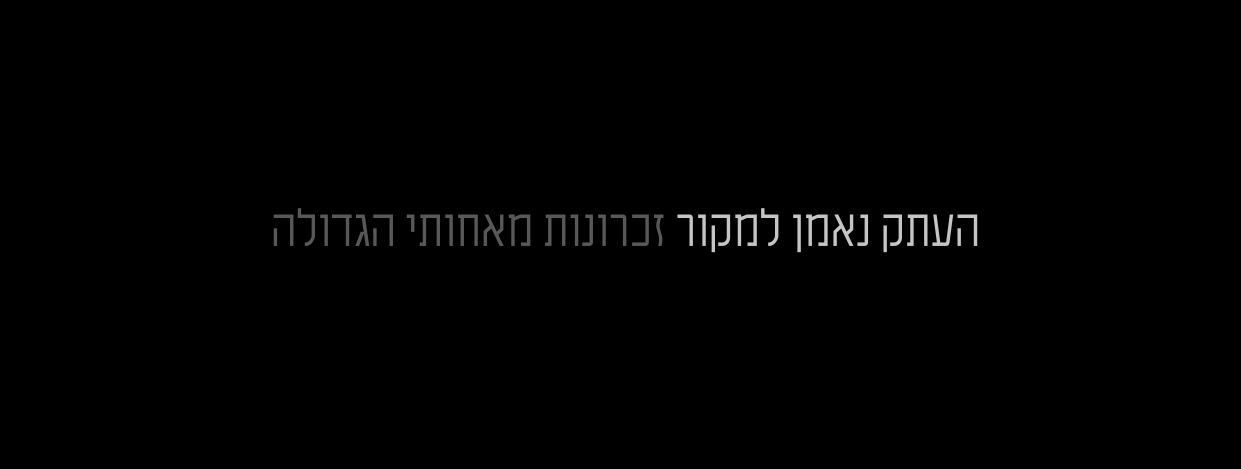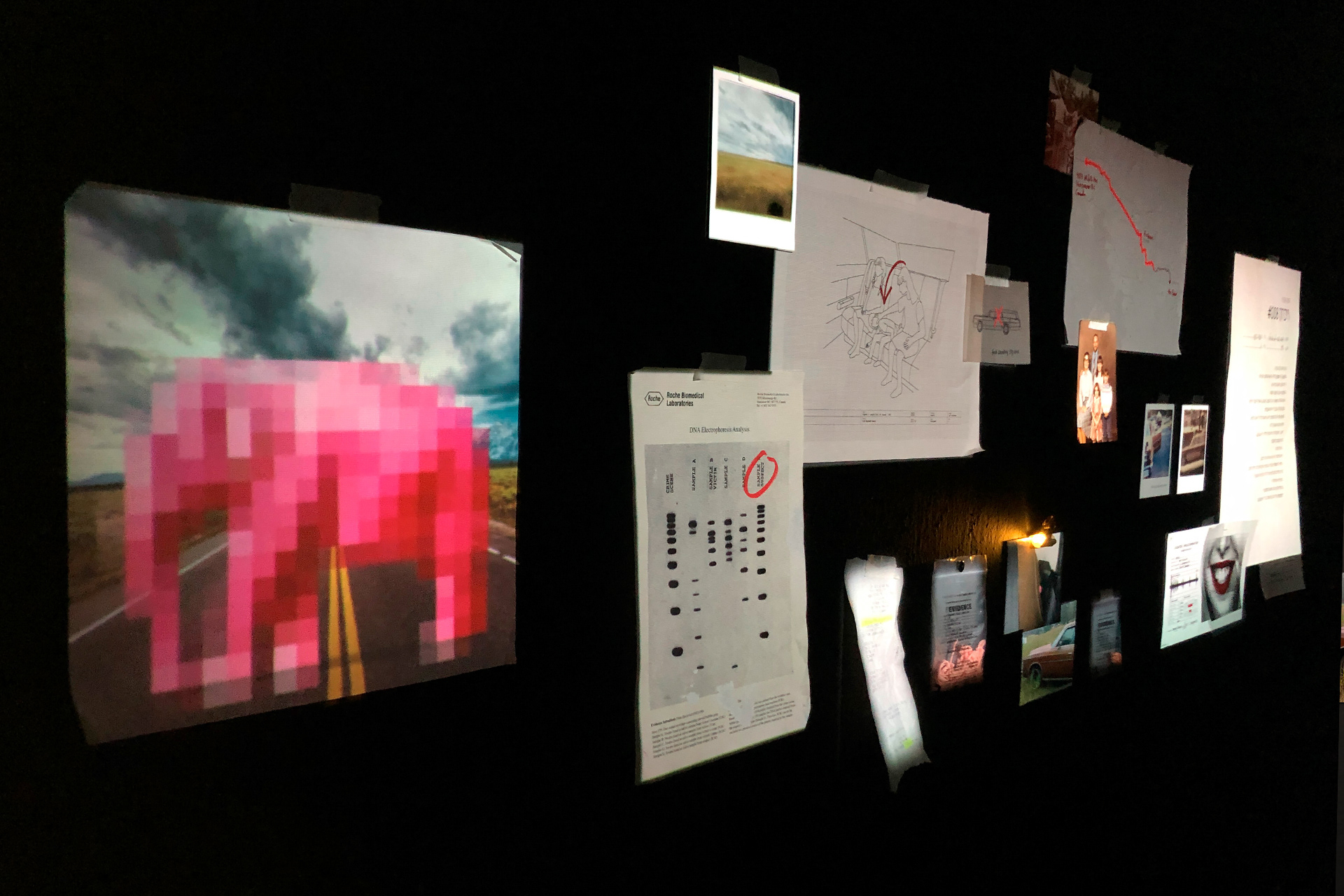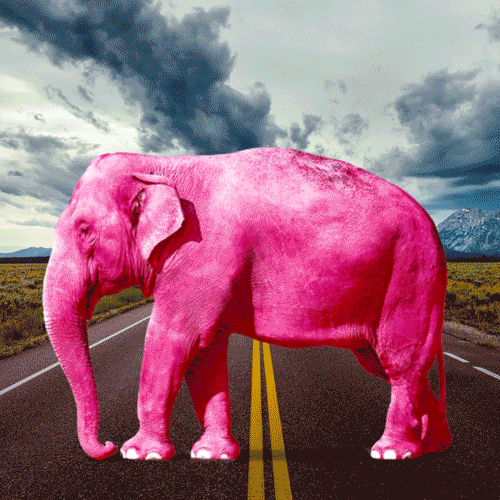Installation view at the “Exit” graduate exhibition in October 2021; curated by Daniel Weinberg and produced by the head of the program, Dr. Liat Lavie (Photograph: Daniel Hanoch)
“Uncertified Copy” is a forensic video installation that consists of four memories. Each memory is reconstructed, re-enacted, fantasized, and re-visualized by combining its fragments, objects, locations, feelings and sounds into a meticulously organized forensic investigation board that invites the viewer to take part in investigating the truth or rather the representation of truth.
In this new kind of storytelling, the investigation board introduces new types of media and formats that mix past and present old and new, now and then.
Just like a memory.
In this new kind of storytelling, the investigation board introduces new types of media and formats that mix past and present old and new, now and then.
Just like a memory.
“Uncertified Copy” was exhibited at the “For Now - Jerusalem Design Week” exhibition in 2022.
Created as the final project of my Masters degree studies at Bezalel
Installation view at the “Jerusalem Design Week - For Now” exhibition at Hansen House, curated by Tal Erez, in June 2022 (www.jdw.co.il) (Photograph: Dor Karmi)




Criminal re-enactments and forensic crime scene reconstructions are used to determine the sequence of events that occurred during and after a crime. The reconstruction of a crime scene can be a very complex task. It combines linking many types of physical evidence, stain pattern information, analytical results, investigative information, and other documentary and testimonial evidence into a complete entity.
Throughout the process of working on the project, one of the questions I kept asking myself was whether it was possible to document an undocumented event. How do we know something happened if it was not recorded? Can the nothing, the lack, the absence, represent truth? My memories did not leave any traces, evidence or remembering witnesses. I had to invent them. Visualize them. Create them. Design them. Make them true. Turn them into evidence to prove it had happened.
I was there. I saw it. Felt it. Smelt it.
I was there. All my being. My entirety.
In a specific moment, a specific place.
Now what’s left?
A memory.
I was there. All my being. My entirety.
In a specific moment, a specific place.
Now what’s left?
A memory.
Installation plan
The installation consists of four reconstructed childhood memories and focuses on the trauma that occurs from repetitive ridicule and laughter, which is the recurring theme of all four memories. The memories feature elements of a forensic investigation board with “live” moving elements (displayed from the projections).
• Description of the crime: displayed as enlarged text next to each of the memories
• Victim: photographed or featured as a moving portrait
• Crime location: displayed on a moving map
• Reconstruction: visualized reenactments and technical illustrations of the crime / the crime scene
• Evidence: collected from the crime scene in different sized evidence bags
• Weapon: the weapon in all four memories is laughter and ridicule and is featured in sound and from the 04 projection
• Suspect: a facial composite is reconstructed step by step from memory from the 02 projected memory
• Victim: photographed or featured as a moving portrait
• Crime location: displayed on a moving map
• Reconstruction: visualized reenactments and technical illustrations of the crime / the crime scene
• Evidence: collected from the crime scene in different sized evidence bags
• Weapon: the weapon in all four memories is laughter and ridicule and is featured in sound and from the 04 projection
• Suspect: a facial composite is reconstructed step by step from memory from the 02 projected memory
Installation plan for the “Exit” graduate exhibition; curated by Daniel Weinberg and produced by the head of the program, Dr. Liat Lavie in October 2021
Installation plan for the “Jerusalem Design Week - For Now” exhibition at Hansen House, curated by Tal Erez, in June 2022 (www.jdw.co.il)

